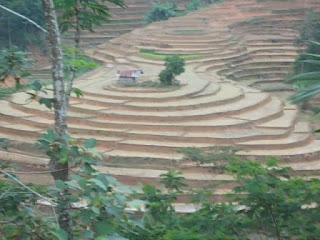Principles of Agroecology and sustainability
Use Renewable Resources
* Use renewable sources of energy instead of non-renewable sources.
* Use biological nitrogen fixation.
* Use naturally-occurring materials instead of synthetic, manufactured inputs.
* Use on-farm resources as much as possible.
Recycle on-farm nutrients.
Minimize Toxics
* Reduce or eliminate the use of materials that have the potential to harm the environment or the health of farmers, farm workers, or consumers.
* Use farming practices that reduce or eliminate environmental pollution with nitrates, toxic gases, or other materials generated by burning or overloading agroecosystems with nutrients.
Conserve Resources
Conserve Soil
* Sustain soil nutrient and organic matter stocks.
* Minimize erosion.
1. use perennials
2. use no-till or reduced tillage methods.
3. mulch.
Conserve Water
* Dry farm.
* Use efficient irrigation systems.
Conserve Energy
* Use energy efficient technologies.
Conserve genetic resources
* Save seed.
* Maintain local landraces.
* Use heirloom varieties.
Conserve Capital
* Keep bank debt to a minimum.
* Reduce expenditures.
Manage Ecological Relationships
* Reestablish ecological relationships that can occur naturally on the farm instead of reducing and simplifying them.
* Manage pests, diseases, and weeds instead of “controlling” them.
* Use intercropping and cover cropping
* Integrate Livestock
* Enhance beneficial biota
1. In soils
o mycorrhizae
o Rhizobia
o free-living nitrogen fixers
2. Beneficial insects
o Provide refugia for beneficials.
o Enhance benefial populations by breed and release programs.
* Recycle Nutrients
1. Shift from throughflow nutrient management to recycling of nutrients.
2. Return crop residues and manures to soils.
3. When outside inputs are necessary, sustain their benefits by recycling them.
* Minimize Disturbance
1. Use reduced tillage or no-till methods.
2. Use mulches.
3. Use perennials
Adjust to Local Environments
* Match cropping patterns to the productive potential and physical limitations of the farm landscape.
* Adapt Biota
1. adapt plants and animals to the ecological conditions of the farm rather than modifying the farm to meet the needs of the crops and animals.
Diversify
* Landscapes
1. Maintain undisturbed areas as buffer zones.
2. Use contour and strip tillage.
3. Maintain riparian buffer zones.
4. Use rotational grazing.
* Biota
1. Intercrop.
2. Rotate crops.
3. Use polyculture.
4. Integrate animals in system.
5. Use multiple species of crops and animals on farm.
6. Use multiple varieties and landraces of crops and animals on farm.
* Economics
1. Avoid dependence on single crops/products.
2. Use alternative markets.
3. Organic markets.
4. Community Supported Agriculture
5. "Pick your own" marketing.
6. Add value to agricultural products.
7. Process foods before selling them.
8. Find alternative incomes.
9. Agrotourism
10. Avoid dependence on external subsidies.
11. Use multiple crops to diversify seasonal timing of production over the year.
Empower People
* Ensure that local people control their development process.
* Use indigenous knowledge
* Promote multi-directional transfer of knowledge, as opposed to "top-down" knowledge transfer.
1. Teach experts and farmers to share knowledge, not "impose" it.
* Engage in people-centric development.
* Increase farmer participation.
1. Link farmers with consumers
* Strengthen communities.
1. Encourage local partnerships between people and development groups.Ensure intergenerational fairness.
* Guarantee agricultural labor.
1. Ensure equitable labor relations for farm workers.
* Teach principles of agroecology & sustainability.
Manage Whole Systems
* Use planning processes that recognize the different scales of agroecosystems.
1. Landscapes
2. Households
3. Farms
4. Communities
5. Bioregions
6. Nations
* Minimize impacts on neighboring ecosystems.
Maximize Long-Term Benefits
* maximize intergenerational benefits, not just annual profits.
* maximize livelihoods and quality of life in rural areas.
* facilitate generational transfers.
* Use long-term strategies.
1. develop plans that can be adjusted and reevaluated through time.
* Incorporate long-term sustainability into overall agroecosystem design and management.
* Build soil fertility over the long-term.
1. build soil organic matter.
Value Health
* Human Health
* Cultural Health
* Environmental Health
1. Value most highly the overall health of agroecosystems rather than the outcome of a particular crop system or season.
2. Eliminate environmental pollution by toxics and surplus nutrients.
* Animal Health
* Plant Health.>>>>agroecology.org


Komentar
Posting Komentar